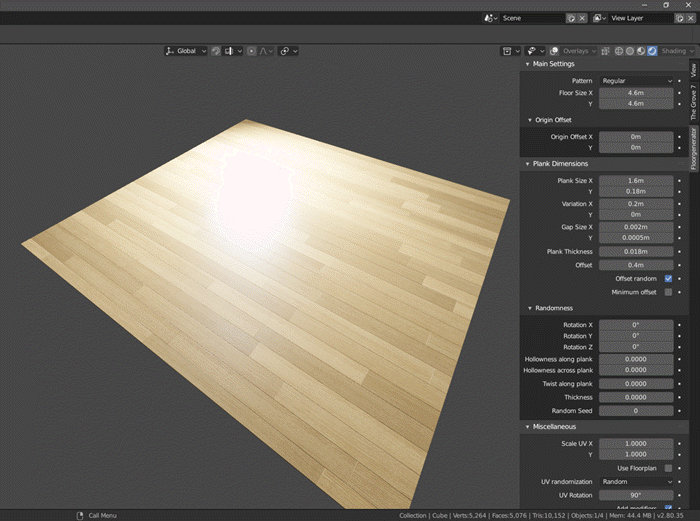
- #How to install floor generator for blender how to
- #How to install floor generator for blender download
Hover over the 3D View to bring it into focus. An armature has several connected bones to which you can connect vertices, so they move along whenever a bone gets moved around. Rigging is creating an armature, the skeleton of the model. The first step to animating this character is rigging it. The right side has the simple texture image loaded: Note that it’s mirrored on the X-axis, this will make the whole process a lot easier along the way.

Open the starter project folder and navigate to the Assets\RW\Models folder. Here are some tutorials to get started.ĭownload the source materials by clicking the link at the top or bottom of this tutorial and unzip it somewhere.
#How to install floor generator for blender how to
In this tutorial, you’ll learn how to prepare a humanoid model using Blender and how to bring it into Unity. It allows for easy set up of animations, the blending between them and retargeting of humanoid animations between models.īeing able to reuse animations allows you to use animations from the asset store and websites like for your own custom characters. This allows you to use the same animations for characters of all shapes and sizes. Luckily for game developers nowadays, most engines come with a system to allow reusing animations as long as the skeletal hierarchy is compatible. The older FIFA games, for example, had players all be the same size because creating a separate skeleton - and a set of animations - would have been a nightmare. This limited character diversity as their height and proportions had to be the same as well. In the past, characters needed to have the exact same skeleton to share animations. It seems like you have to be careful how much geometry you create because it could slow down your model, but it seems like this could be super interesting for rendering and other applications.The visual representation of characters in 3D games is done with the use of models, textures and animations. Overall, this seems to be a VERY interesting extension for both floor and wall generation in SketchUp. I’m not 100% sure what the create behind face option does.

This extension allows you to generate flooring as actual geometry in your models.
#How to install floor generator for blender download
You can download it from the SketchUcation Plugin Store This week’s extension, chosen by my Patreon supporters, is floor generator. This week, we’re going to review an extension that allows you to generate flooring as actual geometry in your models.

If so, please consider supporting me on Patreon (click here to support) or by visiting my Support the Show Page! In this video, we check out a SketchUp plugin that allows you to quickly create flooring, tile, brick, siding and more quickly and easily!ĭo you like these SketchUp tutorials and videos?

Create detailed flooring in SketchUp Fast with Floor Generator! Extension of the Week #48


 0 kommentar(er)
0 kommentar(er)
